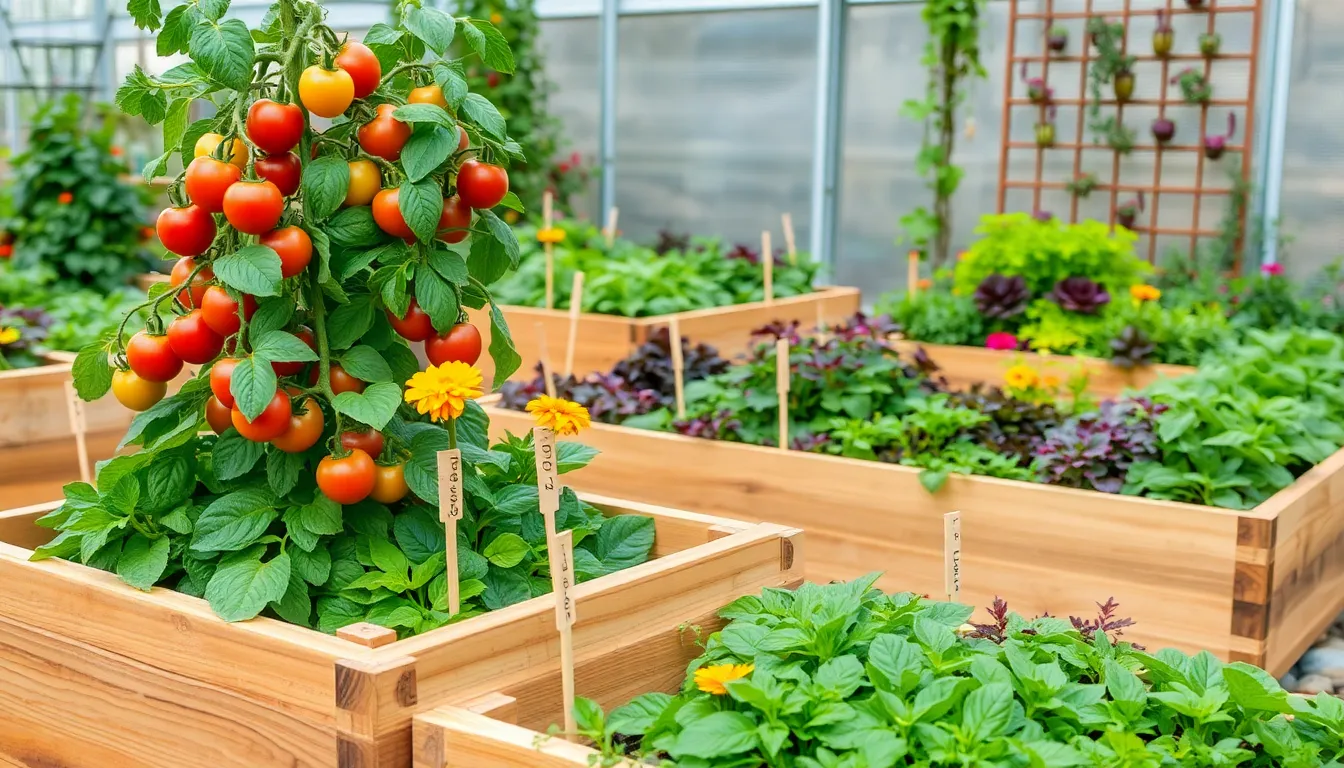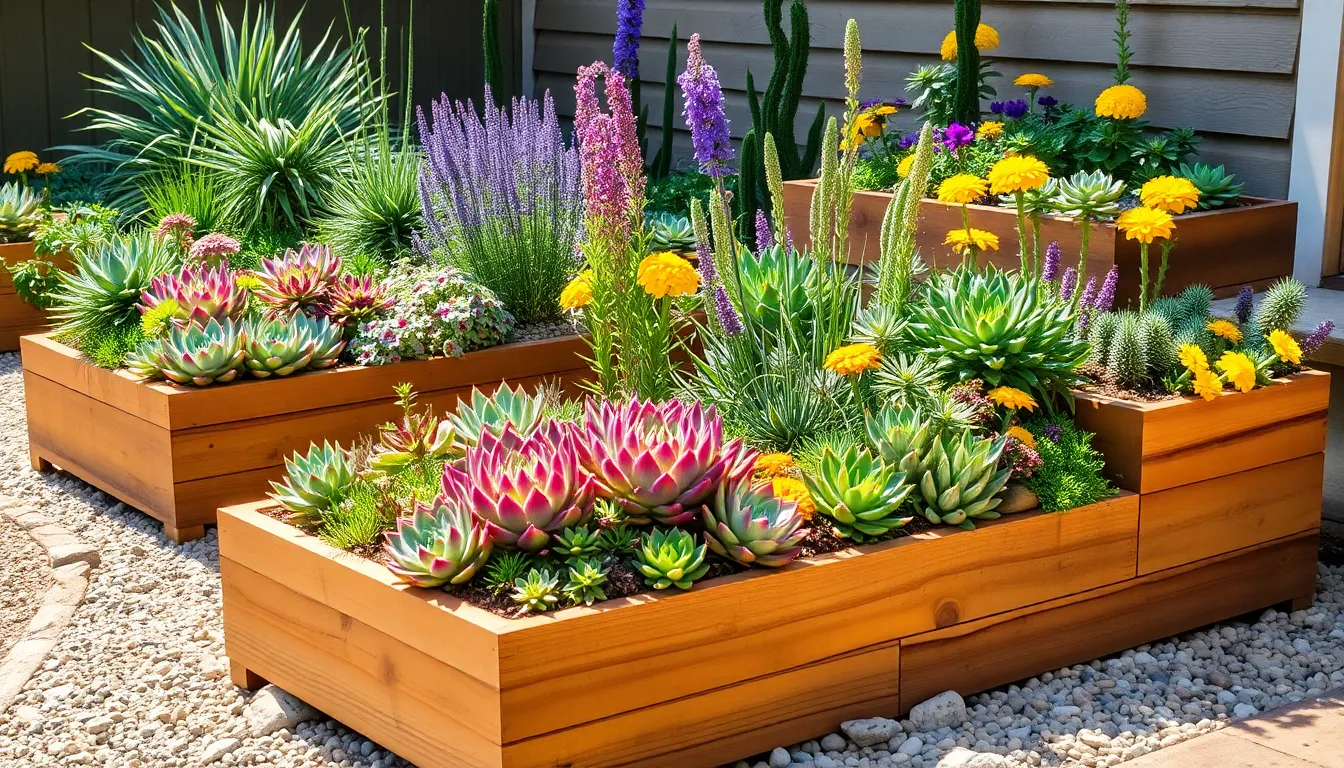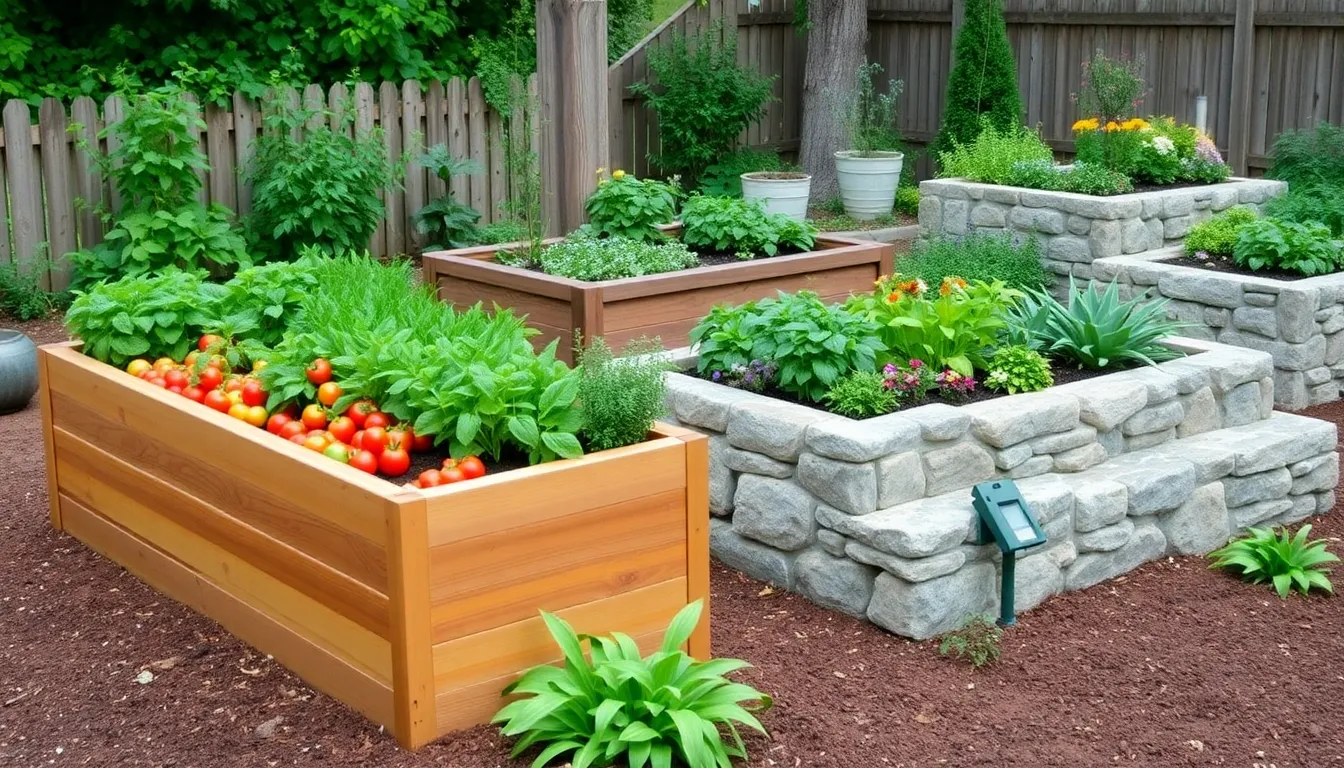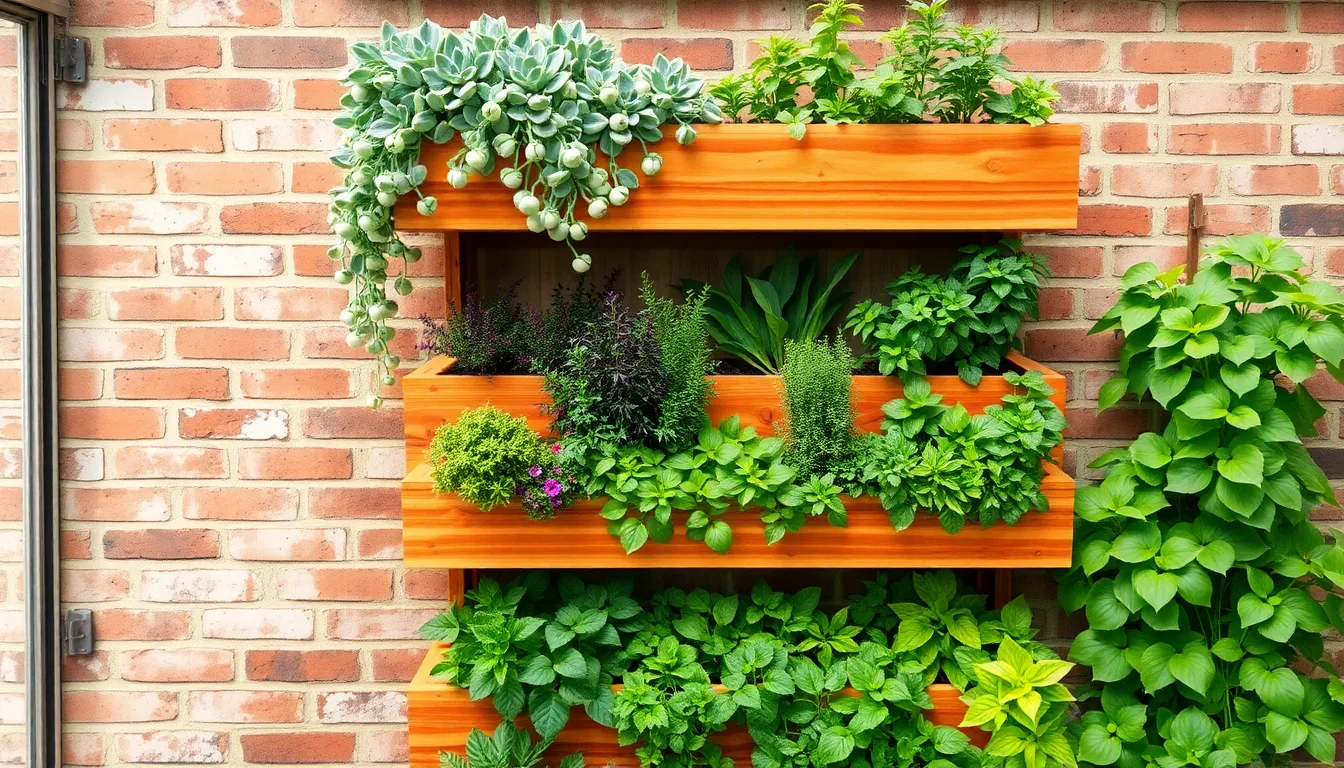Gardening is a journey that invites both the curious novice and the seasoned expert into a world brimming with growth and discovery. Among the many paths you can explore, raised bed gardening stands out as a game-changer, offering a manageable and rewarding way to cultivate a vibrant garden. Whether you’re looking to maximize space, improve soil quality, or simply add a touch of structure to your garden, raised beds can transform your gardening experience.
In this article, we’ll delve into eight stunning raised bed garden plans that cater to every gardener’s needs, from the minimalist to the ambitious. You’ll discover designs that not only enhance the beauty of your outdoor space but also boost efficiency and yield. These plans are thoughtfully crafted to guide you in creating a garden that reflects your unique style and meets your gardening goals.
As you explore these raised bed garden plans, you’ll gain insights into selecting the right materials, optimizing plant placement, and maintaining healthy soil. Our aim is to equip you with practical advice and inspiration, empowering you to bring your garden visions to life. Whether you’re just planting your first seed or looking to revamp your current setup, these plans are designed to make your gardening journey both enjoyable and fruitful.
Choosing the Perfect Raised Bed
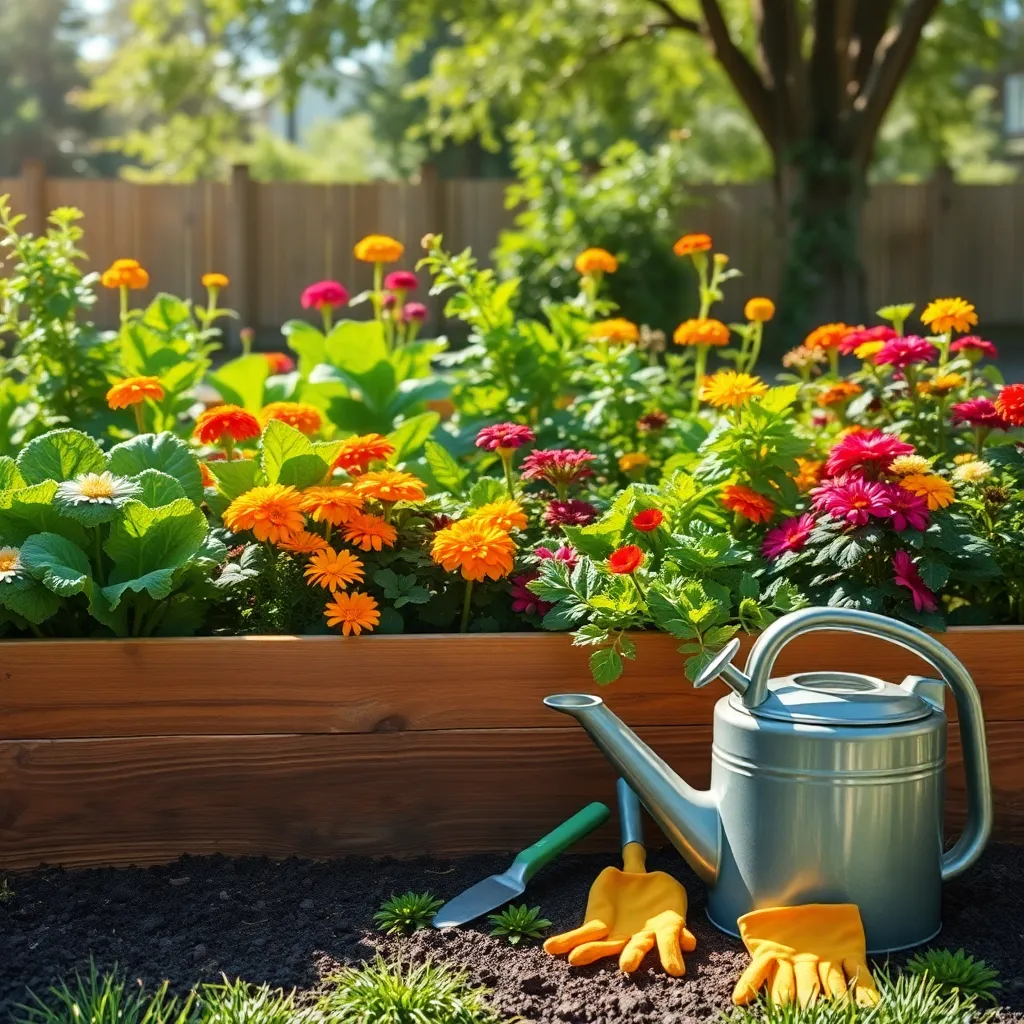
When choosing the perfect raised bed, consider the material and size that best fit your gardening needs. Wood, metal, and composite are popular options, each offering unique benefits like durability and cost-effectiveness.
Wooden raised beds, often made from cedar or redwood, are an excellent choice for their natural resistance to rot. However, it’s crucial to avoid treated wood, as chemicals can leach into the soil and affect plant growth.
For those dealing with limited space, opt for a smaller raised bed that allows for easy access and maintenance. A bed height of 12 to 18 inches is generally ideal, providing sufficient depth for most vegetables and herbs.
Consider the soil and drainage when setting up your raised bed to ensure healthy plant growth. Use a mix of topsoil, compost, and other organic matter to create a nutrient-rich environment, and ensure that the bed has proper drainage to prevent waterlogging.
Material Options for Durability
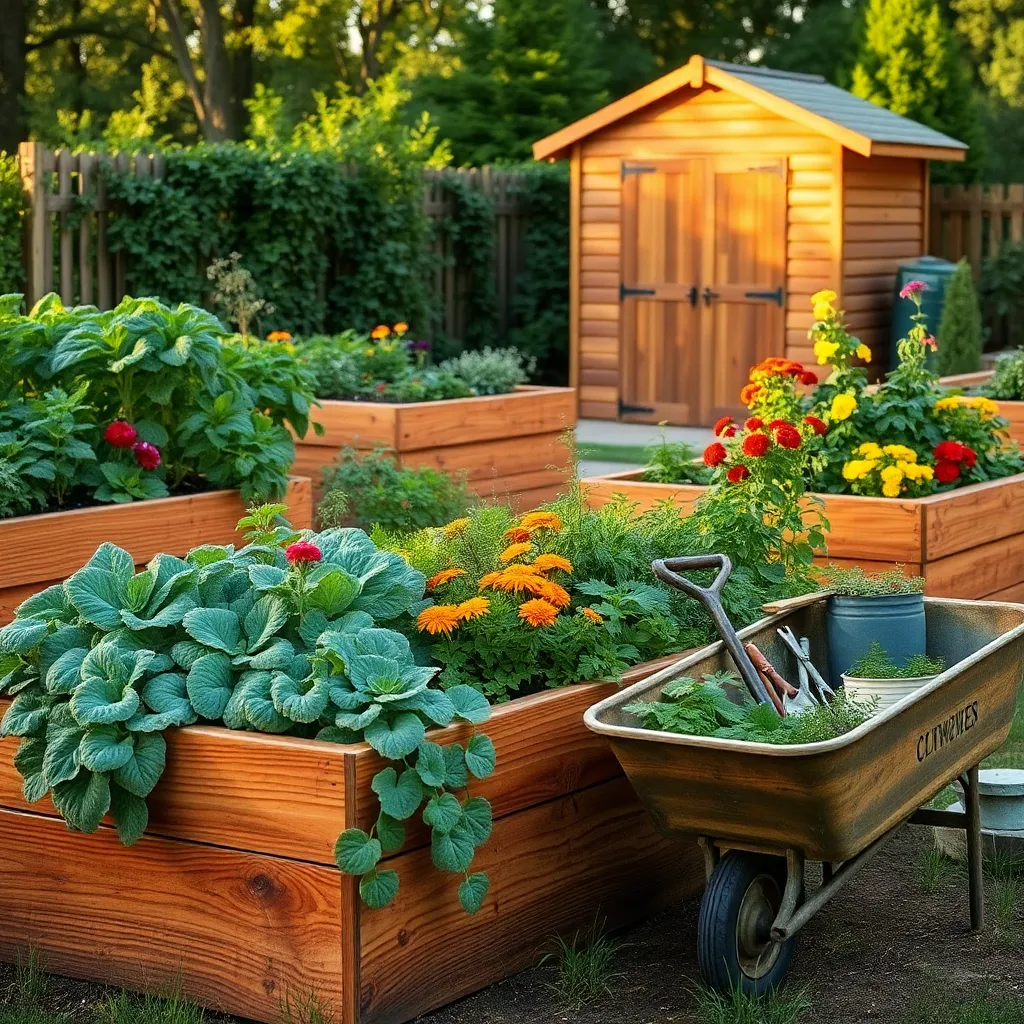
When selecting materials for your raised bed garden, durability is a key factor to consider. Wood, metal, and composite materials each have distinct advantages that can enhance the longevity of your garden setup.
Cedar and redwood are popular wood choices due to their natural resistance to rot and pests. To extend their lifespan, avoid using treated wood as it can leach chemicals into the soil, which might affect your plants.
Metal raised beds, such as those made from galvanized steel, offer excellent durability and a modern aesthetic. Ensure that the metal is properly coated to prevent rusting, especially in areas with high humidity or rainfall.
Composite materials, made from recycled wood fibers and plastics, are another durable alternative. These beds resist warping and decay, making them a low-maintenance option perfect for busy gardeners.
To further enhance the durability of your raised bed, consider lining the interior with landscape fabric. This can help prevent soil from directly contacting the material, reducing the risk of rot and extending the life of the bed.
Designing for Aesthetic Appeal
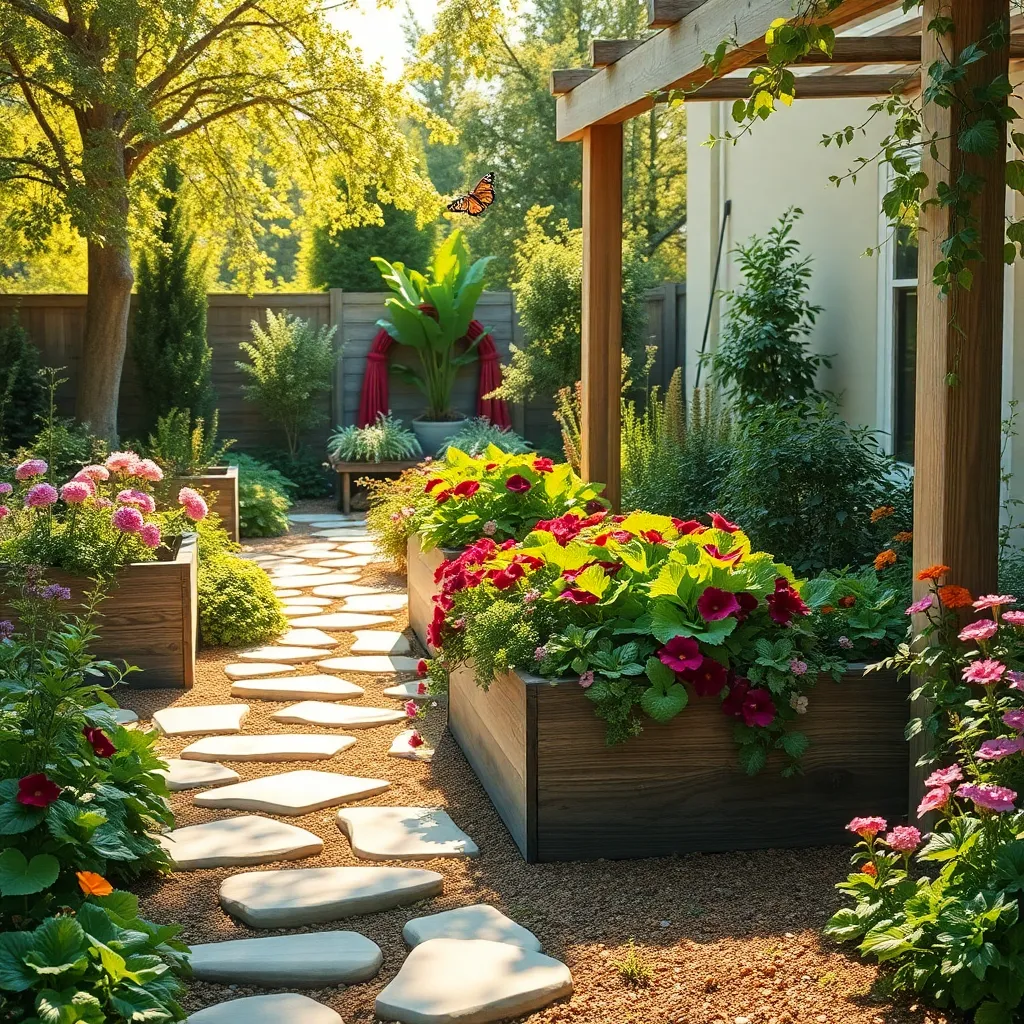
Enhancing the aesthetic appeal of your raised bed garden can transform it into a delightful focal point in your outdoor space. Start by considering the color palette of your plants, ensuring a harmonious blend that complements your surroundings.
Incorporating a mix of plant heights and textures adds visual interest and depth. Place taller plants, like sunflowers or trellised tomatoes, towards the back and shorter varieties, such as lettuce or marigolds, at the front.
For a more advanced approach, think about seasonal color changes to maintain visual appeal throughout the year. Choose plants with staggered blooming times, such as daffodils in spring and asters in fall, to keep your garden vibrant in every season.
Adding decorative elements like stones or small garden sculptures can further enhance your garden’s charm. Use mulch not only to retain moisture but also to contrast and highlight the colors of your plants, creating a neat and polished look.
Optimal Soil Mix for Raised Beds
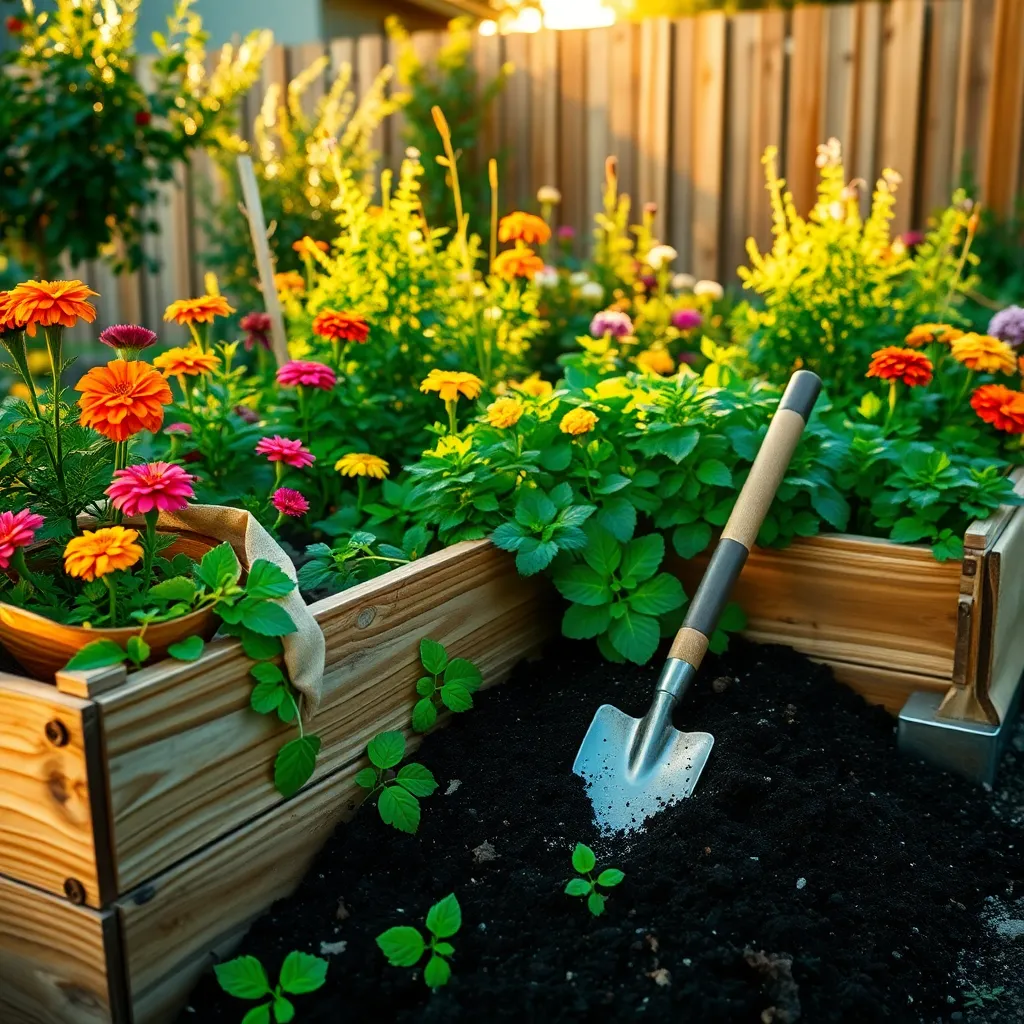
Creating the optimal soil mix for raised beds is crucial for ensuring healthy plant growth. A well-balanced mix should provide adequate drainage, nutrient retention, and aeration to support a variety of plants.
Start with a base of quality soil, which can be a mix of topsoil and compost. Aim for a ratio of about 60% topsoil to 40% compost to create a nourishing environment for your plants.
Incorporating organic matter such as aged manure or well-decomposed leaf mold can enrich the soil with essential nutrients. This addition can further improve soil structure, enhancing both water retention and drainage.
For advanced gardeners, adding specific amendments like perlite or vermiculite can optimize soil texture. These components can help maintain moisture without making the soil too compacted, which is especially beneficial for root vegetables and other deep-rooting plants.
Testing your soil’s pH is another valuable step, as most plants thrive in a slightly acidic to neutral pH range of 6.0 to 7.0. If necessary, adjust the pH by incorporating lime to raise it or sulfur to lower it, ensuring your plants have the optimal growth conditions.
Finally, consider the specific needs of the plants you wish to grow when adjusting your soil mix. For instance, blueberries prefer more acidic conditions, so adding peat moss can help achieve the desired acidity levels.
Plant Selection for Your Climate
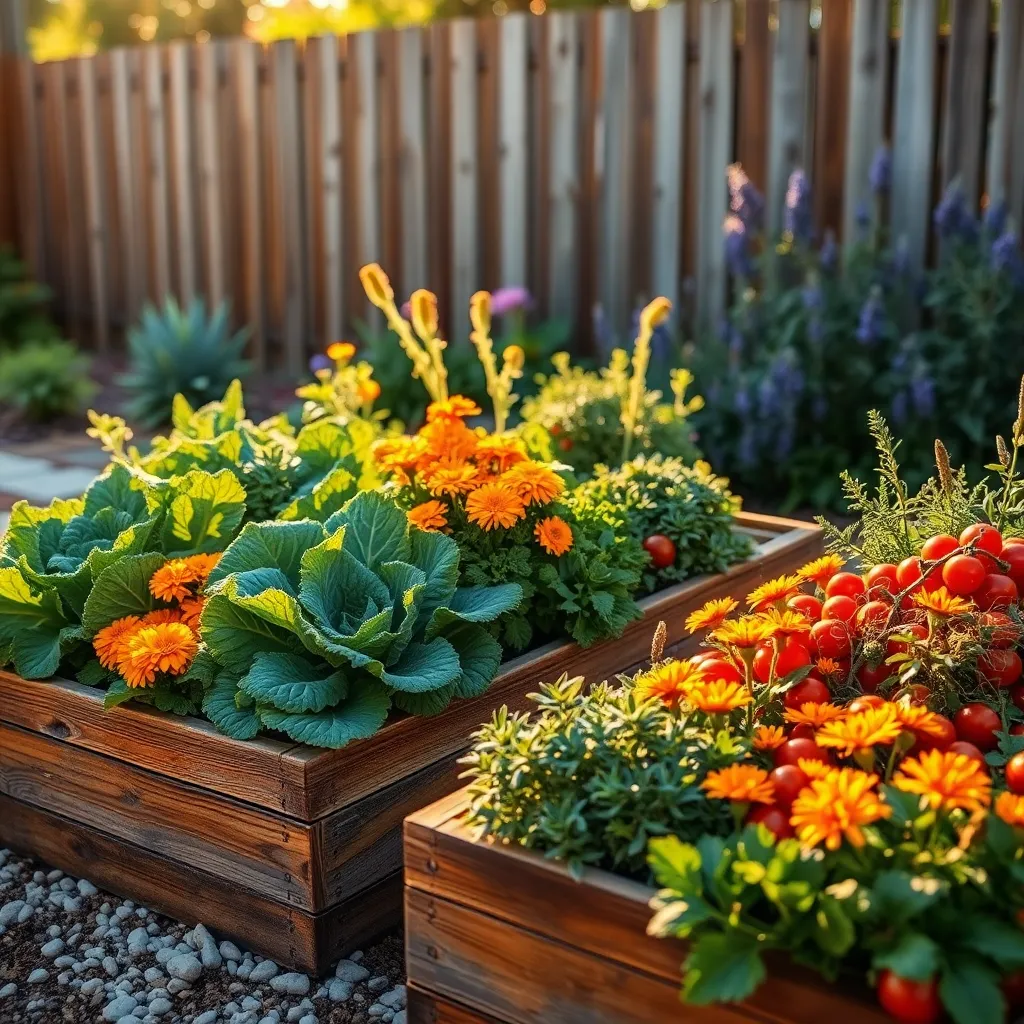
Choosing the right plants for your climate is crucial to the success of your raised bed garden. Start by identifying your USDA Hardiness Zone or equivalent local climate indicator to guide your plant selection.
Consider the temperature range and average rainfall in your area to decide which plants will thrive. For arid regions, opt for drought-tolerant plants like lavender and succulents, which require less frequent watering and do well in well-drained soil.
In cooler climates, hardy perennials such as kale and chives can withstand frost and return each year with proper mulching. Ensure your soil retains moisture by adding organic matter like compost, which also enriches the soil with nutrients.
Gardeners in warmer climates can take advantage of the extended growing season by planting heat-loving vegetables like tomatoes and peppers. These plants require consistent watering, especially during dry spells, and benefit from a layer of mulch to retain soil moisture.
For a more advanced approach, experiment with microclimates within your garden by using structures like cold frames or shade cloths. This allows you to extend the growing season or protect sensitive plants from harsh weather conditions, providing more options for plant selection.
Efficient Watering Systems
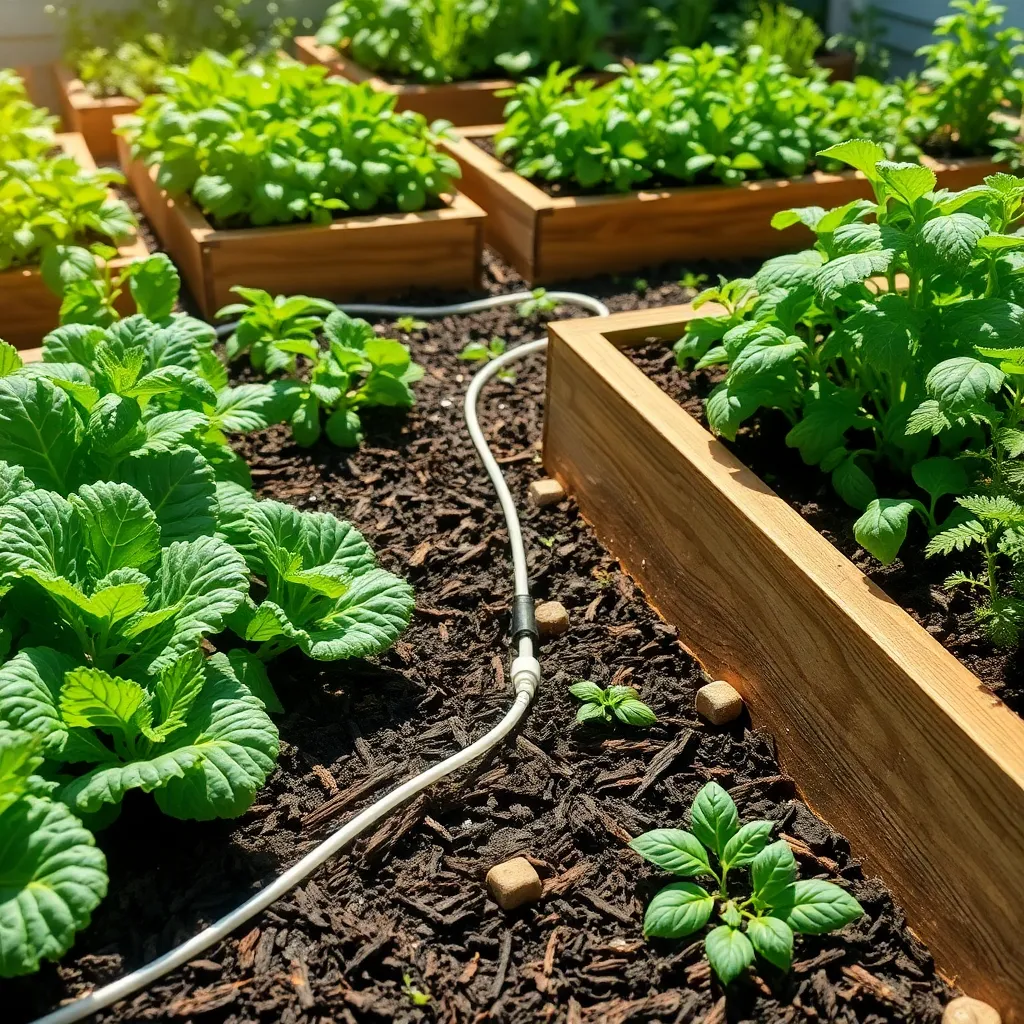
Efficient watering systems are crucial for maintaining the health and productivity of your raised bed gardens. Drip irrigation is a highly recommended option, as it delivers water directly to the plant roots, minimizing waste and evaporation.
To set up a drip irrigation system, you’ll need a timer, tubing, and emitters that match the needs of your plants. It’s important to regularly check the emitters to ensure they are not clogged and adjust the flow rate seasonally to match your garden’s water requirements.
For those who prefer a simpler setup, soaker hoses are an excellent alternative. These hoses allow water to seep slowly and evenly into the soil, providing consistent moisture without overwatering.
Position soaker hoses on the surface of the soil and cover them with mulch to help retain moisture and reduce evaporation. Adjust the water flow and duration based on the weather conditions and the specific needs of your plants, ensuring they receive adequate hydration.
Finally, consider using a rainwater harvesting system to make your watering efforts more sustainable. Collecting rainwater in barrels provides an eco-friendly way to source water for your garden, reducing reliance on municipal water supplies.
Maximizing Space with Companion Planting
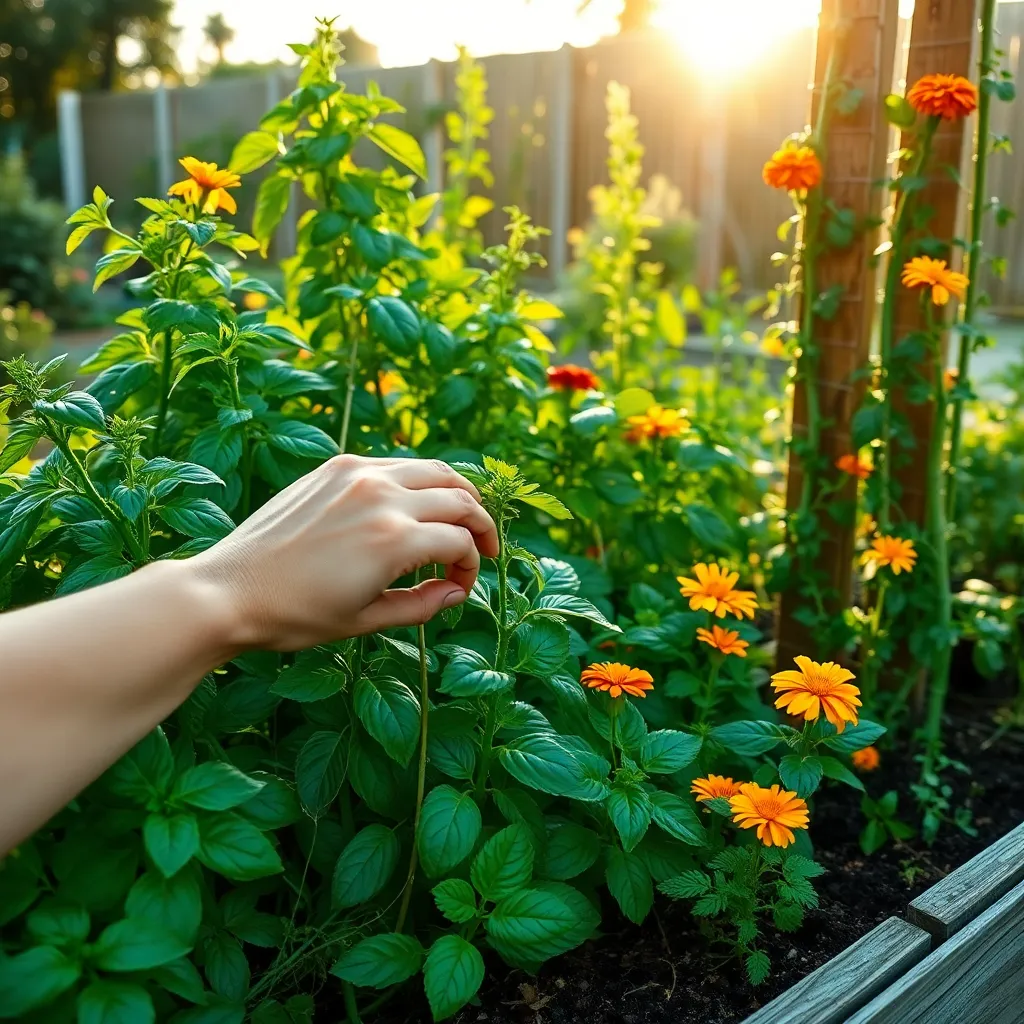
Companion planting is a smart way to maximize the use of space in your raised bed garden. By strategically pairing plants that benefit each other, you can improve plant health and increase yields.
For instance, planting basil near tomatoes can enhance growth and flavor while deterring pests. This combination is not only efficient but also creates a visually appealing garden with vibrant colors and textures.
Another effective pairing is carrots and onions, which work together to repel each other’s pests due to their strong scents. Plant them in alternating rows to maximize space and ensure each plant receives adequate sunlight and nutrients.
Consider adding marigolds to your raised beds, as they help deter nematodes and other harmful insects. Their bright flowers also attract beneficial pollinators, which can boost the overall productivity of your garden.
Seasonal Maintenance Tips and Tricks
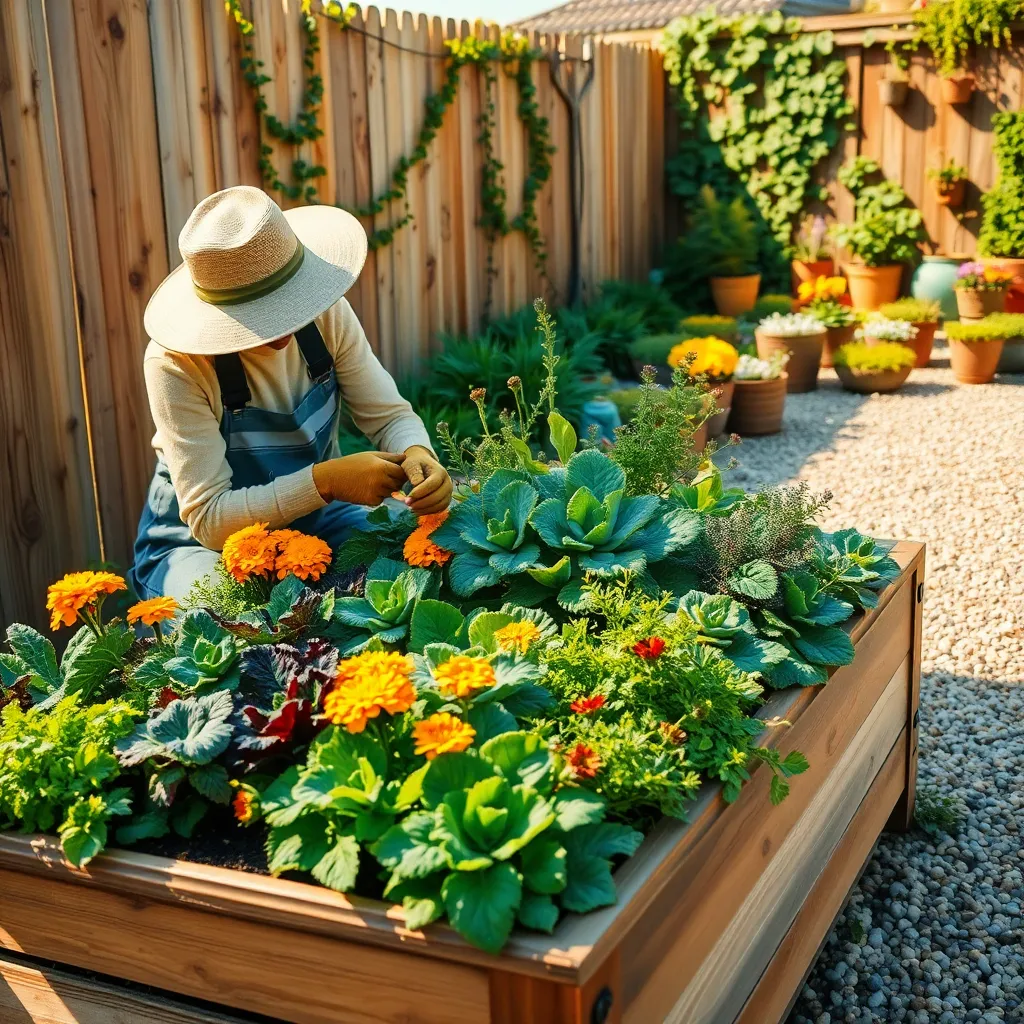
As seasons change, so do the needs of your raised bed garden. In spring, focus on preparing your soil by incorporating organic matter like compost or aged manure to enrich it. This step ensures that your plants have a nutrient-rich start, promoting vigorous growth.
Summer is the time to focus on watering efficiently. To help retain moisture, apply a layer of mulch, which will also suppress weeds. Water deeply but less frequently to encourage roots to grow deeper, ensuring plants are resilient during dry spells.
In the fall, it’s important to clean up your beds by removing spent plants and debris. This prevents pests and diseases from overwintering in your garden. Consider planting a cover crop, such as clover or rye, to improve soil structure and nutrients over winter.
Winter offers a chance to plan and prepare for the next growing season. Sharpen and clean your tools, and take inventory of seeds and supplies. If you live in a mild climate, you might even sow cold-tolerant crops like spinach or kale during the cooler months.
Conclusion: Growing Success with These Plants
In exploring the ‘8 Stunning Raised Bed Garden Plans’, we’ve unearthed key relationship concepts that can cultivate a thriving partnership. Firstly, we touched on the importance of setting a strong foundation, akin to building the base of a garden. Next, we delved into the need for nurturing communication, much like tending to young plants. We highlighted the significance of adaptability, as relationships, like gardens, face changing seasons. The value of shared goals was likened to collaborative gardening, while resilience was mirrored in overcoming unexpected challenges. We also emphasized the importance of personal growth within the relationship, the role of playfulness and creativity, and the joy of celebrating small victories together.
As your actionable next step, consider scheduling a “relationship gardening” session with your partner, where you both can discuss and implement these concepts, ensuring your relationship continues to bloom.
Don’t let these insights fade; bookmark this article for future reference and reinforcement. By nurturing these relationship elements, you’re not only fostering a deeper connection today but also planting seeds for a prosperous partnership in the future. Your relationship success is on the horizon, and with these tools, you’re well-equipped to reach it.

